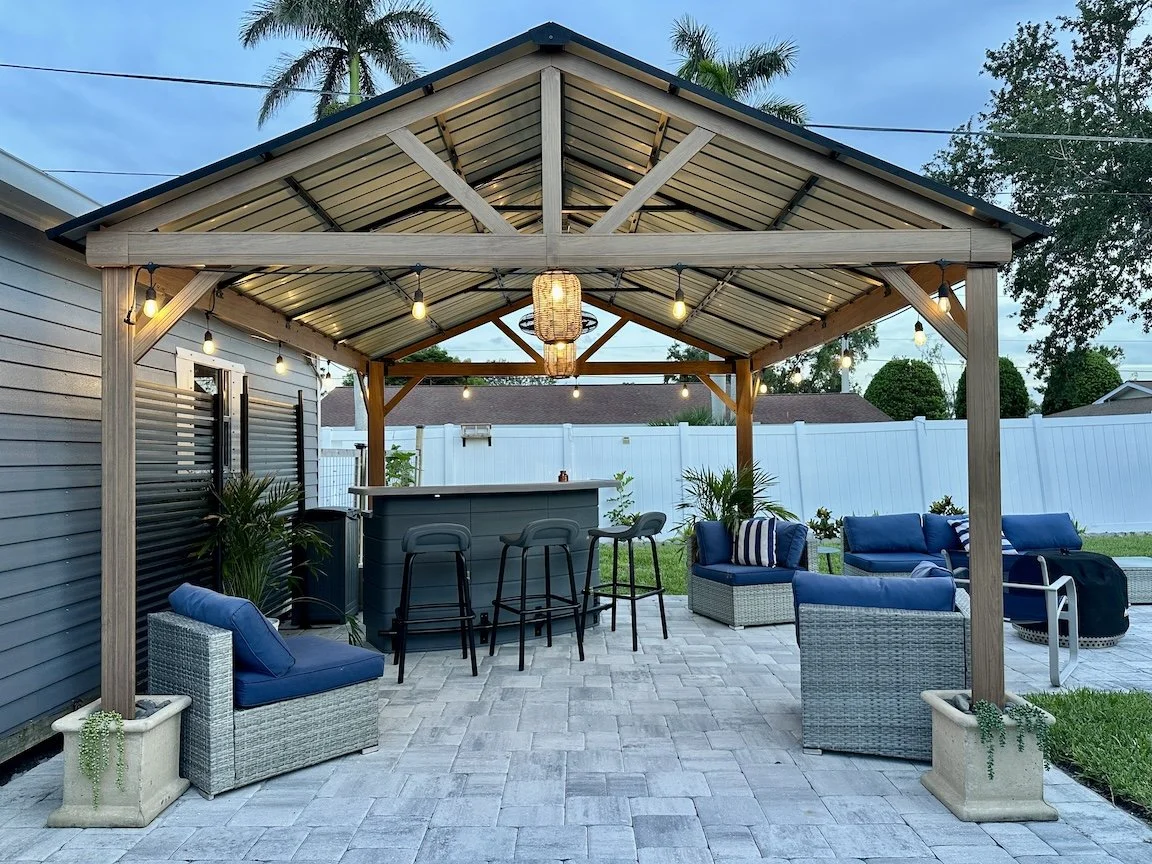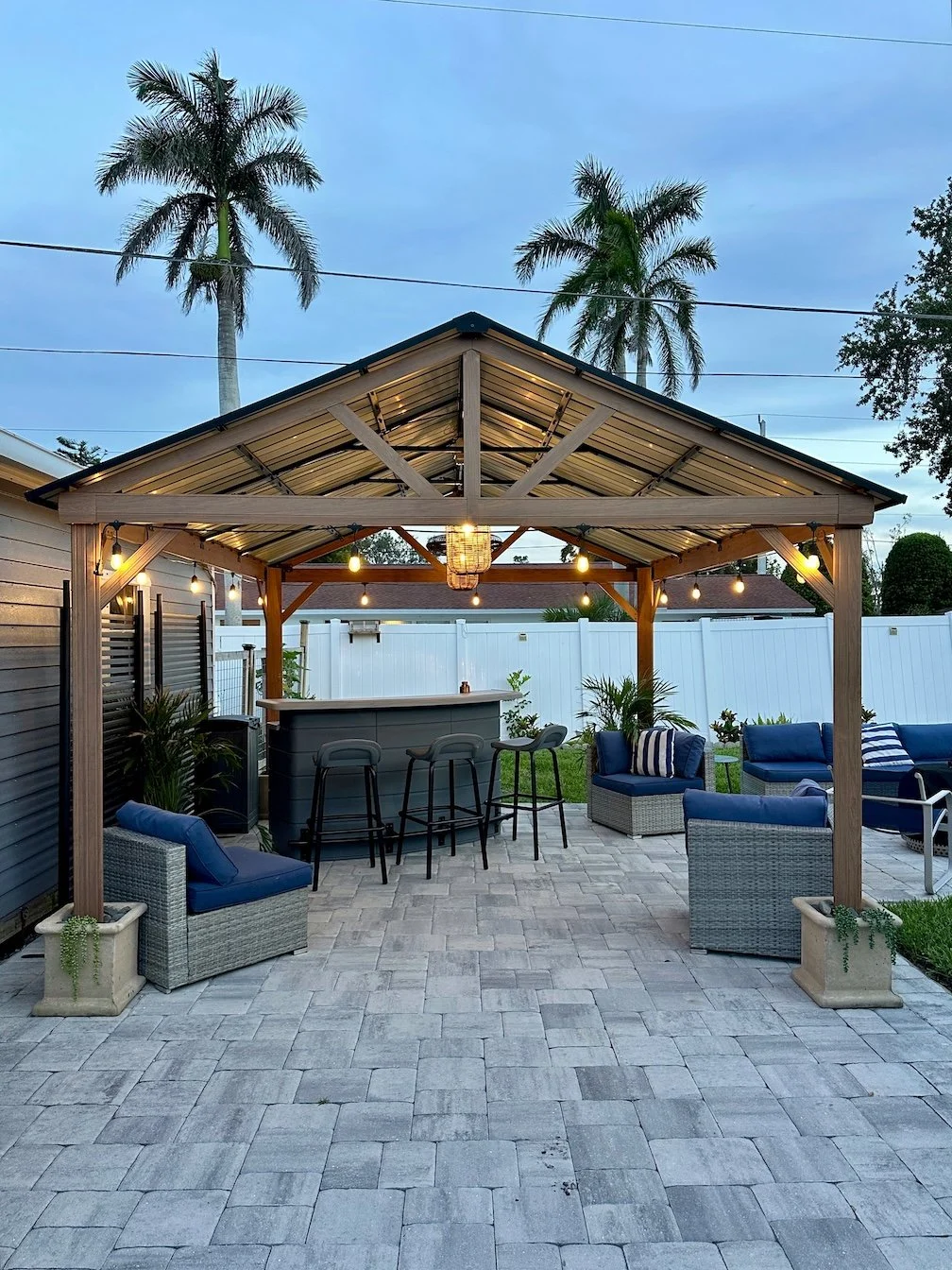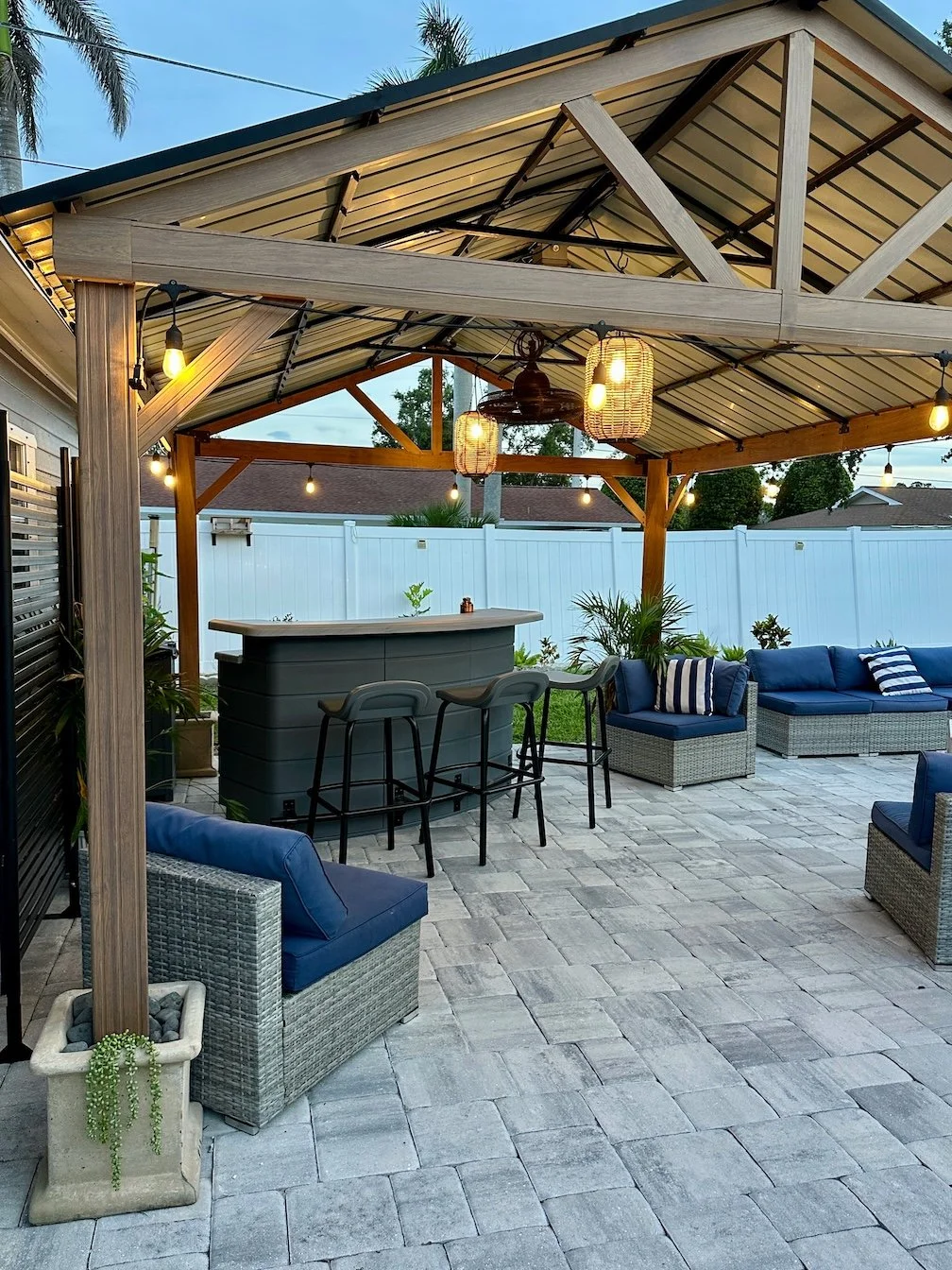How to Anchor Down a Gazebo or Pergola 4 Ways
Installing a gazebo or pergola can completely transform your outdoor space—but if it’s not properly anchored, one strong gust of wind can undo all your hard work. Whether you're working with a concrete or paver patio, wood deck, or backyard lawn, here are four tried-and-true ways to anchor your structure securely and safely.
1. Anchor Gazebo Legs Inside Concrete Planters
A beautiful and functional option is placing each gazebo leg inside a large concrete planter, then filling the planter with fast-setting concrete. This is a great option if your gazebo sits on pavers on a concrete slab that you don't want to drill or cut into.
This method, which I did personally 4 years ago in my backyard, not only holds up to Florida hurricanes, but also doubles as stylish outdoor decor. It was extremely easy and did not require any digging up dirt or into concrete. Here’s how to do it:
Remove any feet from your gazebo legs so they can sit fully in the planter.
Place each leg inside a sturdy planter, then fill it with mixed or dry-set concrete (like Sakrete).
Use a level to ensure the legs remain plumb as the concrete sets.
Drill drainage holes in the sides of the planter to avoid water buildup.
Finish the top with faux plants, stones, or real greenery for a clean look.
Bonus: Our gazebo has survived 4 major hurricanes and strong winds without budging.
See the full blog post on how I did the concrete planters HERE.
Best for: Paver patios, renters, decorative spaces
Not ideal for: Permanent or code-compliant installs
2. Use Ground Spikes or Helical Anchors for Soft Ground
If you’re installing your pergola or gazebo on grass, dirt, or gravel, you'll need a way to anchor it down into the ground to keep it secure during windy conditions.
Ground spikes or ground anchors are a great choice:
Drive metal stakes or spiral anchors deep into the ground at each leg.
Attach pergola posts using heavy-duty brackets, lag bolts, or straps.
Choose anchors rated for wind resistance and load-bearing based on your gazebo’s weight.
These can often be removed or repositioned and are less invasive than concrete footings.
Best for: Grass or gravel areas, temporary setups
Not ideal for: Concrete or decks
3. Bolt to a Wood Deck Using Lag Screws or Structural Screws
If your gazebo or pergola is going on a wood deck, you can anchor it directly using lag bolts or structural screws. This is one of the easiest methods because the wooden deck gives you a stable base to attached to.
Position each leg of the gazebo over a joist if possible, not just deck boards, for strength.
Pre-drill holes and use lag bolts, structural screws (like TimberLOK), or heavy-duty brackets to secure each post.
Use galvanized or stainless steel hardware to prevent corrosion.
For added security and extra stability, use metal post anchors or corner brackets designed specifically for decks.
This method ensures your gazebo won't shift or lift—even in heavy winds.
Best for: Raised wood decks, permanent backyard installations
Not ideal for: Uneven or soft ground
4. Pour Concrete Footers or Secure with Wedge Anchors
For the strongest and most permanent option, you can anchor your structure to concrete. This is ideal for large pergolas, permanent structures, and for gazebos being installed prior to a concrete patio being poured.
Dig footings (usually 2+ feet deep or below frost line), pour concrete, and embed metal post brackets while the concrete sets.
On an existing slab or patio, use wedge anchors or expansion bolts to connect metal base plates to the concrete.
Always check local building codes for depth and anchoring requirements.
This method is ideal for pergolas that need to withstand high winds or meet permit standards.
Best for: Long-term installations, high-wind areas
Not ideal for: Renters or temporary setups
Quick Comparison Chart
Final Tips Before Anchoring:
Always check local codes—some areas require specific anchoring methods for wind zones.
Match your anchor type to your surface—wood, concrete, soil, or pavers each need different solutions.
Don’t skimp on hardware—galvanized or stainless bolts and brackets will last longer and hold stronger.
It may come down to a personal preference and the resources you have available to you when deciding how to anchor down your gazebo or pergola. The goal is that you get peace of mind knowing your backyard hang-out area is secure.
By choosing the right anchoring method, you’ll ensure it stays put through wind, rain, and whatever else nature throws your way—so you can relax under your new outdoor retreat with confidence.











HEY THERE, I’M ASHLEY!
Here to inspire beginner DIYers!